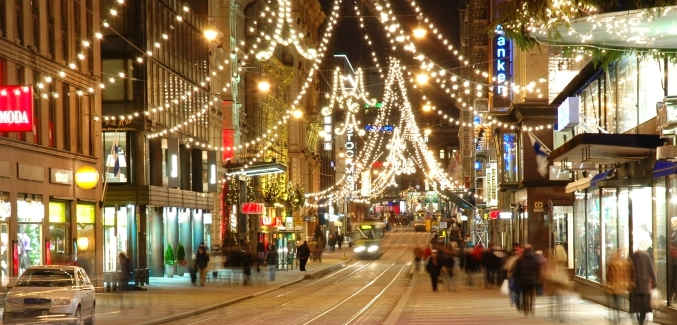Why shops stock up on christmas goods so early
For the past few weeks I’ve heard/read several people bemoaning the fact that shops are stocking Christmas goods earlier and earlier. You only need to see a tree and tinsel in the shop window in late October and there will be a mass moan. Here’s what the moaners don’t understand – you cannot really blame the shops for opening earlier and earlier, it isn’t really their fault. If the critics knew about non-linearities and feedback effects they would understand what is happening.
To see why shops are opening earlier, consider this simplified feedback model. Suppose we have M & S, Debenhams, John Lewis and Jarrold’s in the city centre. A long time ago all four shops used to stock their Christmas goods from December 1st. One day M & S try to obtain the advantage over the other three by stocking their Christmas goods a week earlier (from November 24th). Debenhams, John Lewis and Jarrold’s have three choices; they can do nothing, they can emulate M & S, or they can go one better and stock their Christmas goods earlier (say, from November 17th). If they do nothing they risk losing a week’s vital Christmas trade from opportunist shoppers to M & S; if they emulate M & S then there’s nothing stopping M & S doing the same again, leaving Debenhams, John Lewis and Jarrold’s on the November 24th date and stocking their Christmas goods a week earlier (from November 17th). So, quite naturally in response they pick the best of the three options by stocking their Christmas goods earlier than M & S. But it doesn’t stop there – what then happens is that each one of their competitors will look to outdo the other by choosing a date earlier than the others. This continues over the years – and if you obtain the statistics you would find a pattern of increased early Christmas stock to match and/or outdo the competition.
This is what happens when feedback effects occur; the shops are continually under pressure to stock their Christmas goods earlier and earlier to obtain an advantage, which is why you see all these shops beginning their Christmas trading at times that are, to many of you, premature. Their hand has been forced, lest they lose vital trade time to their competitors. The shops are subject to "feedback" effects – whereby a particular parameter x changes and via a "feedback" route the change in x causes further change in x (thus x is "feeding" back to itself). Feedback systems, depending on the kind of feedback involved, can produce varying "curves" of change when plotted on graph paper – some of which are quite chaotic.
There is a ‘but’ of course – if it were just down to procuring an advantage by trading earlier then M & S, Debenhams, John Lewis and Jarrold’s would all begin their Christmas trading earlier and earlier to the point where it is far too early for Christmas considerations. But, of course, it isn’t like that – there is a balance to be struck, because the shelf room they take up with Christmas stock amounts to a loss of shelf space for other more saleable goods if they are displayed too premature for the festive season. The decorations, wrapping paper, cards, bumper chocolates, etc would be counter-productive stock if they were displayed in August in the hope of obtaining a festive head start on the rival shops – which is why the balance between being too early and too late in the year is of huge importance.

